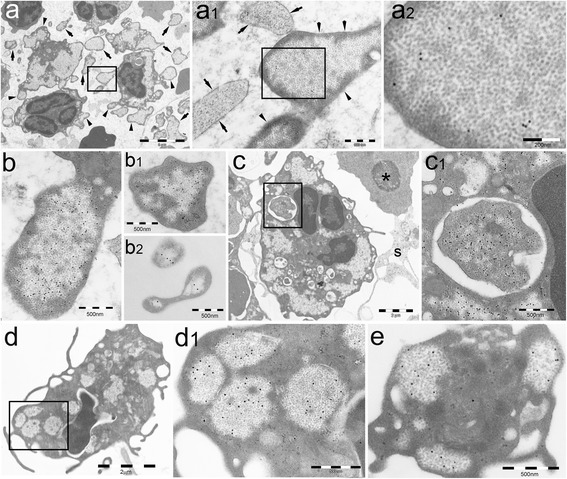Fig. 1.

PaCSs are widespread in hematopoietic cells of patients with untreated CML. a Several BM cells of the granulocytic lineage display cytoplasmic collections of barrel-like particles, enlarged in a1 and a2 to show the particles and their 20S proteasome (β5i subunit) immunogold reactivity. PaCS-filled blebs (arrowheads) and cell-detached vesicles (arrows) are devoid of cytoplasmic organelles. A cytoskeleton-rich cytoplasmic network (arrowheads in a1) separates PaCSs from the cytoplasmic membrane; the cytoskeletal network is largely lost in some detached vesicles (arrow in a1) undergoing degeneration while still preserving proteasome reactivity. b A PaCS-filled cellular bleb (b) and isolated vesicles (b1, b2) in BM extracellular space show PaCS-restricted immunogold reactivity for polyubiquitinated proteins (FK1 antibody). c A myelocyte shows large, FK1-reactive PaCSs and several FK1-negative autophagic vesicles. The largest vesicle is enlarged in c1 to show its enveloping double membrane and its unusual storage of PaCS-type particles, as well as FK1-immunoreactive polyubiquitinated proteins comparable with those of adjacent PaCSs; a likely sign of ongoing PaCS autophagy. The asterisk indicates an erythroblast showing no PaCSs; s indicates stromal cell processes. d, e PB granulocytic cell (d, enlarged in d1) and platelet (e) from a CML patient showing PaCSs reactive for polyubiquitinated proteins
